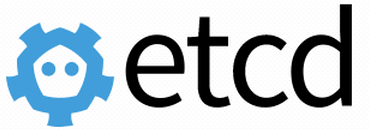A C# .NET (dotnet) GRPC client for etcd v3+
- Supported .NET Versions
- Installing Package
- Documentation
- Quick Start
- Features
- Contributing
- Testing and Code Coverage
- .NET 9
- .NET 8
For older .NET versions:
- For .NET 6/7 support, use version 7.2.0
- For .NET versions < 6, use version < 5.x
Nuget package is published on nuget.org and can be installed in the following ways:
Install-Package dotnet-etcddotnet add package dotnet-etcdpaket add dotnet-etcdThe NuGet Team does not provide support for this client. Please contact its maintainers for support.
For comprehensive documentation of all operations and method overloads, please see the documentation pages.
The documentation is organized into the following sections:
- Client Initialization - How to initialize and configure the client
- Dependency Injection - Using the client with DI
- Authentication - Authentication with etcd
- Key-Value Operations - Working with keys and values
- Watch Operations - Watching for changes to keys
- Lease Operations - Working with leases
- Lock Operations - Distributed locking
- Election Operations - Leader election
- Cluster Operations - Managing the etcd cluster
- Maintenance Operations - Maintenance tasks
- Transactions - Atomic operations
The documentation includes detailed API references with all method overloads, parameters, and return types, as well as examples for common use cases.
Add using statement at the top of your class file:
using dotnet_etcd;// Basic initialization with a single endpoint
EtcdClient client = new EtcdClient("localhost:2379");
// Multiple endpoints
EtcdClient client = new EtcdClient("https://localhost:23790,https://localhost:23791,https://localhost:23792");
// Insecure connection (HTTP)
EtcdClient client = new EtcdClient("http://localhost:23790", configureChannelOptions: (options =>
{
options.Credentials = ChannelCredentials.Insecure;
}));For more advanced initialization options, see the Client Initialization documentation.
// Authenticate with username and password
EtcdClient client = new EtcdClient("https://localhost:23790");
var authRes = client.Authenticate(new Etcdserverpb.AuthenticateRequest()
{
Name = "username",
Password = "password",
});
// Use the token for authenticated operations
client.Put("foo/bar", "barfoo", new Grpc.Core.Metadata() {
new Grpc.Core.Metadata.Entry("token", authRes.Token)
});For more authentication options, see the Authentication documentation.
Built-in support for Microsoft.Extensions.DependencyInjection with extension methods for easy configuration:
services.AddEtcdClient(options => {
options.ConnectionString = "localhost:2379";
options.UseInsecureChannel = true;
});dotnet-etcd includes an automatic retry mechanism for handling transient failures when communicating with etcd clusters. By default, the client is configured with a retry policy that:
- Retries up to 5 times when encountering unavailable servers
- Uses exponential backoff between retry attempts
- Handles common transient errors automatically
This functionality is enabled by default and requires no additional configuration.
Operations can be canceled using a CancellationToken. By default, the client throws OperationCanceledException when a request is canceled.
CancellationTokenSource cts = new CancellationTokenSource();
try {
cts.Cancel();
var response = client.Status(new StatusRequest(), cancellationToken: cts.Token);
} catch (OperationCanceledException) {
Console.WriteLine("Operation was canceled.");
}For legacy cancellation behavior with RpcException, see the documentation.
Most errors from the etcd client are thrown as RpcException with specific status codes that can be handled
appropriately:
try {
var response = client.Get("non-existent-key");
} catch (RpcException ex) {
switch (ex.StatusCode) {
case StatusCode.NotFound:
Console.WriteLine("Key not found");
break;
case StatusCode.Unavailable:
Console.WriteLine("Server unavailable");
break;
// Handle other status codes
}
}The EtcdClient implements IDisposable and should be properly disposed when no longer needed:
using (var client = new EtcdClient("https://localhost:2379")) {
var response = client.Get("my-key");
// ...
}For more details on proper client disposal, see the documentation.
We welcome contributions to help improve dotnet-etcd! Please see the CONTRIBUTING.md file for guidelines on how to contribute.
For bug reports, feature requests, or questions, please create an issue on GitHub.
The project includes both unit tests and integration tests. Unit tests can be run without any external dependencies, while integration tests require a running etcd cluster.
The dotnet-etcd.Tests directory includes scripts to easily set up either a single-node or a 3-node etcd cluster using
Docker:
cd dotnet-etcd.Tests
# Start a single-node cluster
./start-etcd.sh
# Or start a 3-node cluster
./start-etcd.sh 3nodes
# Run the tests
dotnet test
# Stop the cluster when done
./stop-etcd.shFor convenience, you can also use the script that handles the entire process:
cd dotnet-etcd.Tests
# Run integration tests with a single-node cluster
./run-integration-tests.sh
# Or with a 3-node cluster
./run-integration-tests.sh 3nodesSee the test README for more details on running tests.
To run only the unit tests (which don't require a running etcd server):
dotnet test dotnet-etcd.Tests/dotnet-etcd.Tests.csproj --filter "FullyQualifiedName~Unit"To run integration tests, you need a running etcd server. The integration tests will connect to etcd at localhost:2379
by default.
dotnet test dotnet-etcd.Tests/dotnet-etcd.Tests.csproj --filter "FullyQualifiedName~Integration"To run all tests:
dotnet test dotnet-etcd.Tests/dotnet-etcd.Tests.csprojTo run tests with code coverage and generate a report:
- Make sure you have the required tools:
dotnet tool install -g dotnet-reportgenerator-globaltool- Run the coverage script:
./run-unit-tests-with-coverage.sh- View the coverage report at
./dotnet-etcd.Tests/TestResults/CoverageReport/index.html
This project is licensed under the MIT License - see the LICENSE file for details.
We have comprehensive test coverage for dotnet-etcd, including both unit tests and integration tests.
For detailed information about running tests and generating code coverage reports, see the TESTING.md file.
# Run unit tests only
dotnet test dotnet-etcd.Tests/dotnet-etcd.Tests.csproj --filter "Category=Unit"
# Run integration tests (requires running etcd server)
dotnet test dotnet-etcd.Tests/dotnet-etcd.Tests.csproj --filter "Category=Integration"
# Run all tests
dotnet test dotnet-etcd.Tests/dotnet-etcd.Tests.csprojWe use GitHub Actions to automatically generate code coverage reports for the main branch. You can view the latest code coverage report on the GitHub Pages site.
To generate a code coverage report locally:
# Install the required tools
dotnet tool install --global dotnet-reportgenerator-globaltool
# Run tests with coverage
dotnet test dotnet-etcd.Tests/dotnet-etcd.Tests.csproj --collect:"XPlat Code Coverage"
# Generate HTML report
reportgenerator -reports:"**/coverage.cobertura.xml" -targetdir:"coveragereport" -reporttypes:Html
# Open the report
open coveragereport/index.html # On macOS
# or
start coveragereport/index.html # On WindowsFor more details, see the TESTING.md file.



